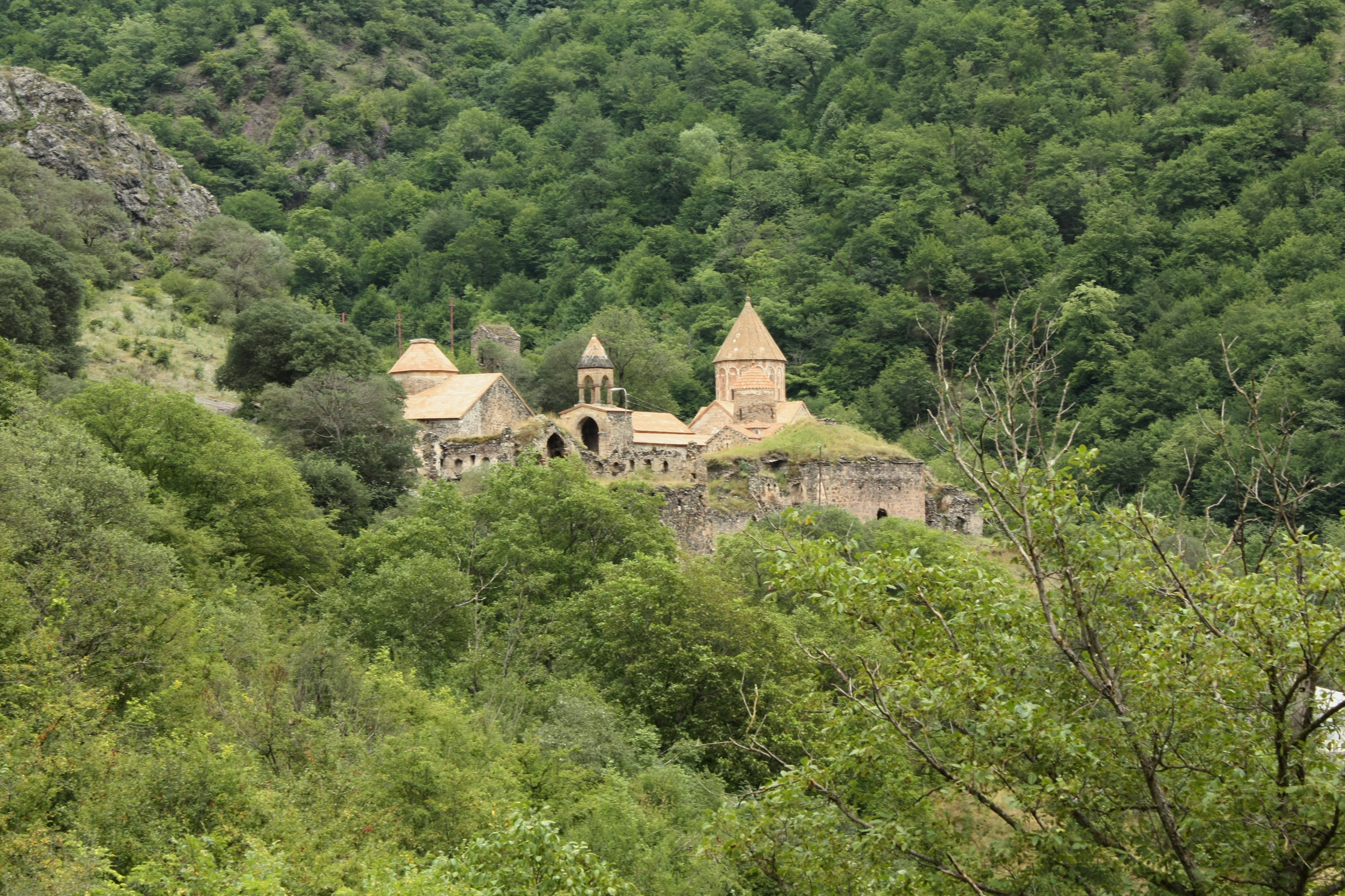|
Lekh Castle
Handaberd (), also known as Lekh Castle ( or ) or Lev Castle, is a 9th-century fortress located in the Kalbajar District of Azerbaijan, near the villages of Lev and Knaravan, on the right bank of the Levçay River. It was built by Atrnerseh I, ruler of the Armenian Principality of Khachen, who resided there. We must now turn our attention to the Siwnids of Xačíēn, the third line of the House of Siwnik', 13 descendants of Atrnerseh I, the brother of Gregory - Supʻan I . D . West Siwnik' (Xačʻēn) Atrnerseh I, the first Prince of Xačʻēn and builder of Handu Castle (Handaberd), ruled over what must have represented more or less the entire mountain country along the southeastern slopes of the Armenian plateau, i.e., the former land of Arc'ax . History One of several castles in the highlands of Kalbajar, Handaberd was constructed over the Ayrım Gorge, on a high mountain ridge surrounded by thick forest, from the right bank of the Levçay River flowing by Ganlykend vil ... [...More Info...] [...Related Items...] OR: [Wikipedia] [Google] [Baidu] |
Kalbajar District
Kalbajar District () is one of the 66 Administrative divisions of Azerbaijan, districts of Azerbaijan. It is located in the west of the country and belongs to the East Zangezur Economic Region. The district borders the districts of Lachin District, Lachin, Khojaly District, Khojaly, Agdam District, Agdam, Tartar District, Tartar, Goranboy District, Goranboy, Goygol District, Goygol and Dashkasan District, Dashkasan districts of Azerbaijan, as well as the Gegharkunik Province, Gegharkunik and Vayots Dzor Province, Vayots Dzor provinces of Armenia. Its capital and largest city is Kalbajar. As of 2020, the district had a nominal population of 94,100. History In Turkic languages, Turkic ''Kalbajar'' means ''"Castle on the mouth of the river"''. The city of Kalbajar was renamed to ''Karvachar'' () after its occupation in the First Nagorno-Karabakh war, which corresponds to the ancient district of Vaykunik, one of 12 cantons of Artsakh (historic province), Artsakh.Robert H. Hewsen, ' ... [...More Info...] [...Related Items...] OR: [Wikipedia] [Google] [Baidu] |
Khachkars
A ''khachkar'' (also spelled as ''khatchkar'') or Armenian cross-stone (, , խաչ ''xačʿ'' "cross" + քար ''kʿar'' "stone") is a carved, memorial stele bearing a cross, and often with additional motifs such as rosettes, interlaces, and botanical motifs. ''Khachkars'' are characteristic of medieval Christian Armenian art.The Grove Encyclopedia of Medieval Art and Architecture. — Oxford University Press, 2012. — Vol. 2. — P. 222.''"'Khatck'ar' rmen.:'cross-stone'Typical Armenian stone monument, comprising an upright slab (h. c. 1—3 m) carved with a cross design, usually set on a plinth or rectangular base. "'' Since 2010, khachkars, their symbolism and craftsmanship are inscribed in the UNESCO list of Intangible Cultural Heritage. Description The most common ''khachkar'' feature is a cross surmounting a rosette or a solar disc. The remainder of the stone face is typically filled with elaborate patterns of leaves, grapes, pomegranates, and bands of interlace ... [...More Info...] [...Related Items...] OR: [Wikipedia] [Google] [Baidu] |
Palaces In Azerbaijan
A palace is a large residence, often serving as a royal residence or the home for a head of state or another high-ranking dignitary, such as a bishop or archbishop. The word is derived from the Latin name palātium, for Palatine Hill in Rome which housed the Roman Empire, Imperial residences. Most European languages have a version of the term (''palats'', ''palais'', ''palazzo'', ''palacio'', etc.) and many use it to describe a broader range of buildings than English. In many parts of Europe, the equivalent term is also applied to large private houses in cities, especially of the aristocracy. It is also used for some large official buildings that have never had a residential function; for example in French-speaking countries ''Palais de Justice'' is the usual name of important courthouses. Many historic palaces such as parliaments, museums, hotels, or office buildings are now put to other uses. The word is also sometimes used to describe an elaborate building used for public ent ... [...More Info...] [...Related Items...] OR: [Wikipedia] [Google] [Baidu] |


